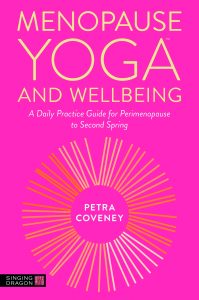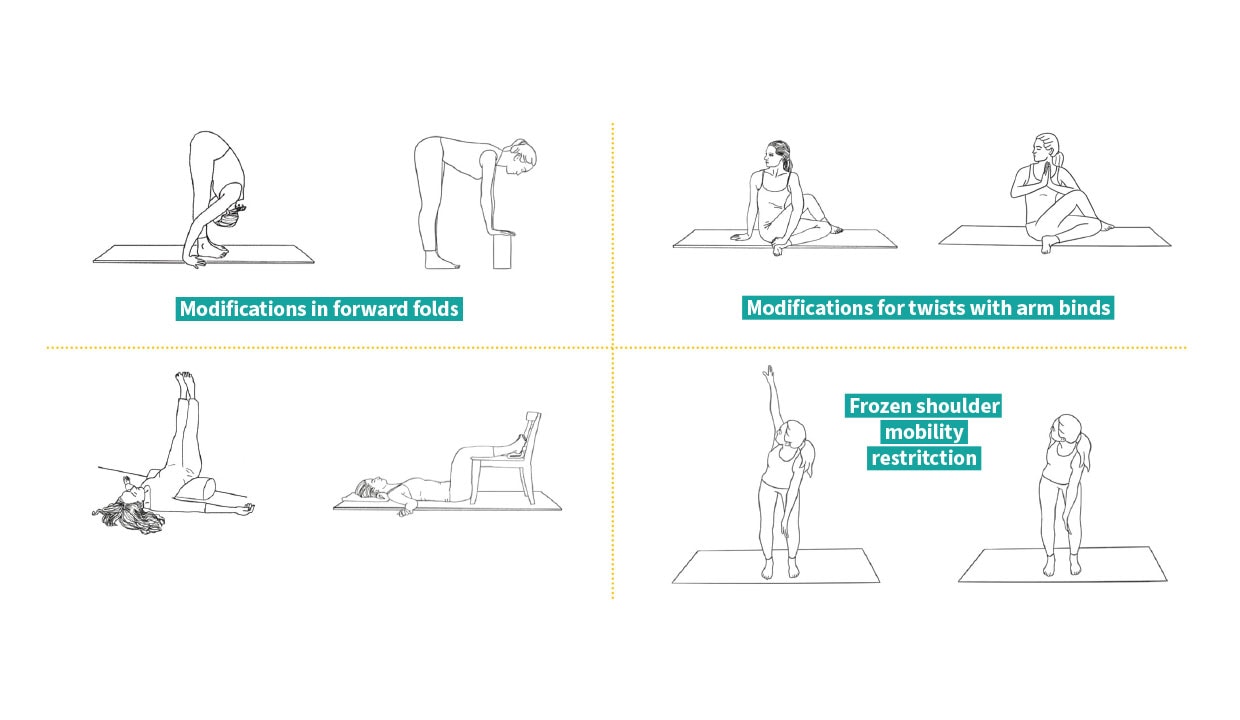Menopause Modifications
How to modify yoga for the stages of menopause. By Petra Coveney
Reading time: 3 minutes
The hormone changes at different stages of the menopause can physically affect your mobility, flexibility, balance and energy levels. The psychological symptoms can feel overwhelming and trigger stress. Yoga can help you reduce stress and manage some of these symptoms as you navigate this significant transition.
What style of yoga helps?
Not all yoga is suitable, and the style of yoga you need during perimenopause may change at menopause and post menopause.
Perimenopause
If you have frequent hot flushes, constipation and bloating, fatigue, migraine headaches, dizziness or vertigo and tinnitus, then hot or dynamic yoga may exacerbate these symptoms. Restorative yoga may be more suitable until these symptoms pass. If you feel a surge of menopause rage and irritability, try a Yang Yin yoga practice.
Post Menopause
The steep decline in oestrogen, progesterone and testosterone may reduce your bone density (osteoporosis), muscle strength (sarcopenia) including pelvic floor (genitourinary symptoms). Try Hatha yoga and hold the standing poses for longer to boost your heart health and develop leg strength; balance and abdominal conditioning poses for stability; back extension for posture, breathing techniques (modified Breath of Joy and Kapalabhati) to reenergise, stimulate digestion and lift your mood. Menopause Yoga invites you to adapt your practice to your individual needs and embrace the menopause as a positive journey of self-discovery, giving yourself time to pause and reprioritise yourself.
Below are a few of the modifications I offer in my classes and in my new book:
Modifications in forward folds: Instead of a standing forward fold (uttanasana) with unsupported spine, use bricks, a chair, or wall to maintain a straight spine, including your neck.
Modifications for inversions: This legs raised up a wall pose (viparita karani) may cause numbness or ‘pins and needles’ and a headache due to changes in blood pressure and circulation. Instead of raising your pelvis onto a bolster rest your pelvis on a folded blanket and relax your legs on a chair.
Modifications for twists with arm binds: In poses such as Lord of the Fishes seated twist, avoid forcing the spinal rotation with your arm. Instead, press your hands together (Anjali mudra) and use your abdominal muscles to support the twist. If you have frozen shoulder mobility restriction, allow your raised arm to rest at the side of your body.

Petra Coveney is the creator of Menopause Yoga, an international teacher, trainer, yoga therapist and author. Her second book ‘Menopause Yoga & Wellbeing – a Daily Practice Guide for Perimenopause to Second Spring,’ is published in October by Singing Dragon Books (2025).



